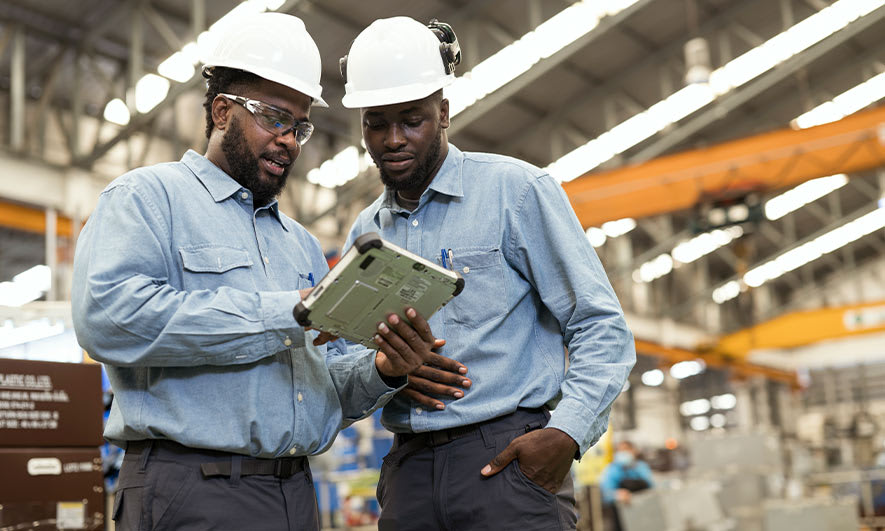The rise of artificial intelligence (AI) is met with both optimism and pessimism. Supporters argue it could unlock improvements in health, scientific research and education, while others worry that AI could upend labor demand and the need for human capital going forward. There are many unanswered questions when it comes to the future with AI: What happens with the next generation of workers? What is the impact on society? What is the social contract between citizens and their government? What about the future of the economy itself? The uncertainty associated with change is always a concern, but there are positives to look towards. At The Hartford’s Global Insights Center, we believe that AI will ultimately augment labor and enhance productivity over the coming decades.
How did we come to this belief? To understand this view, we consider past technological cycles and their impact on productivity, layered with the expected outlook for U.S. labor and demographics.
Productivity as a Gauge for Economic Gains
Productivity refers to the amount of output divided by the collective number of hours needed to produce that output. For example, if it takes one hour to make a metal sheet, and the next year it takes just 30 minutes, productivity (output per hour) goes from one sheet to two sheets, or an increase of 100%. During this time, we’ve enhanced productivity.
Why does productivity matter? Over the long run, the economy grows for two fundamental reasons:
- More people are producing things (labor force growth)
- Each worker can produce more (productivity growth)
Productivity also allows for real wage growth for workers.
Since the end of World War II, the US has experienced two periods of accelerated productivity growth.
- In the 1950s and 1960s, the application of new technologies developed during the war, and continued investments in research and development spurred productivity growth, which was also supported by investments in education (GI bill) and infrastructure (Interstate highway system). This era ended in the 1970s, with the energy crisis and high inflation.
- In the 1990s, the advancement and adoption of the internet increased productivity but began to wane after the financial crisis in 2008. It went on to create more jobs in industries that we could not even fathom in the 1990s.
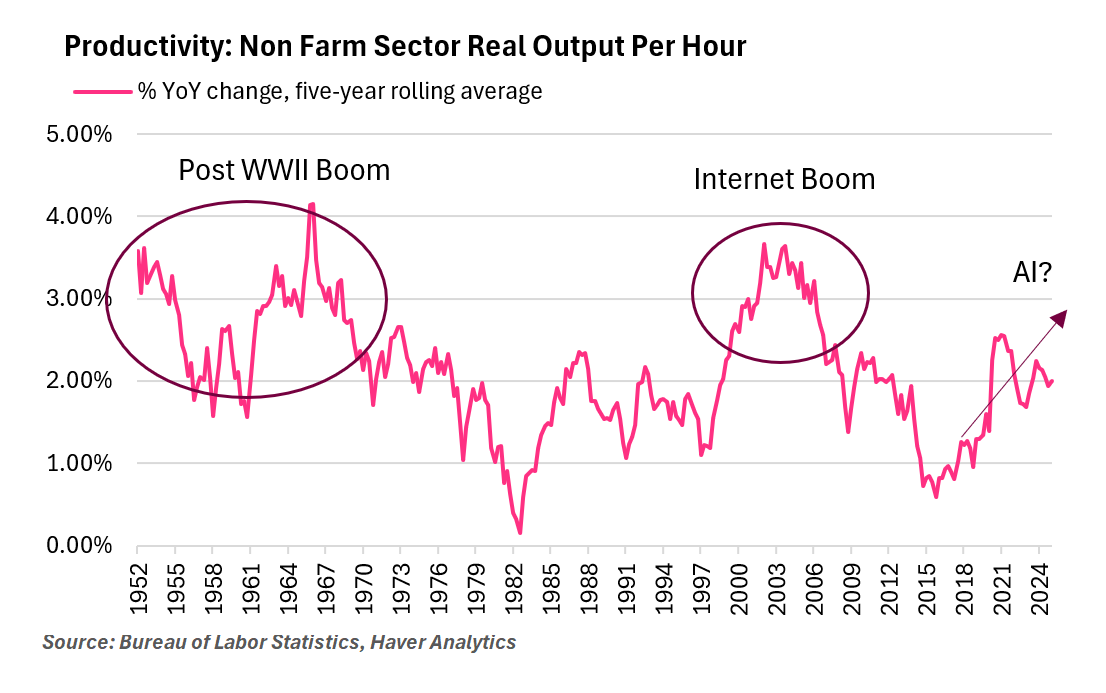
An AI Productivity Boom?
In 2025, we are on the cusp of a new productivity boom caused by the integration of AI into modern society. The promise of technology is always to supplement human labor and increase the productive power of individual workers. Of course, technologies can also replace labor, making certain jobs obsolete, but U.S. economic history shows that reductions in employment in one part of the economy have been accompanied by opportunities elsewhere. In 1850, over half of all workers were employed in agriculture. Mechanization and productivity improvements have reduced that to just 2% today, and employment in services has grown from 20% to 80%.
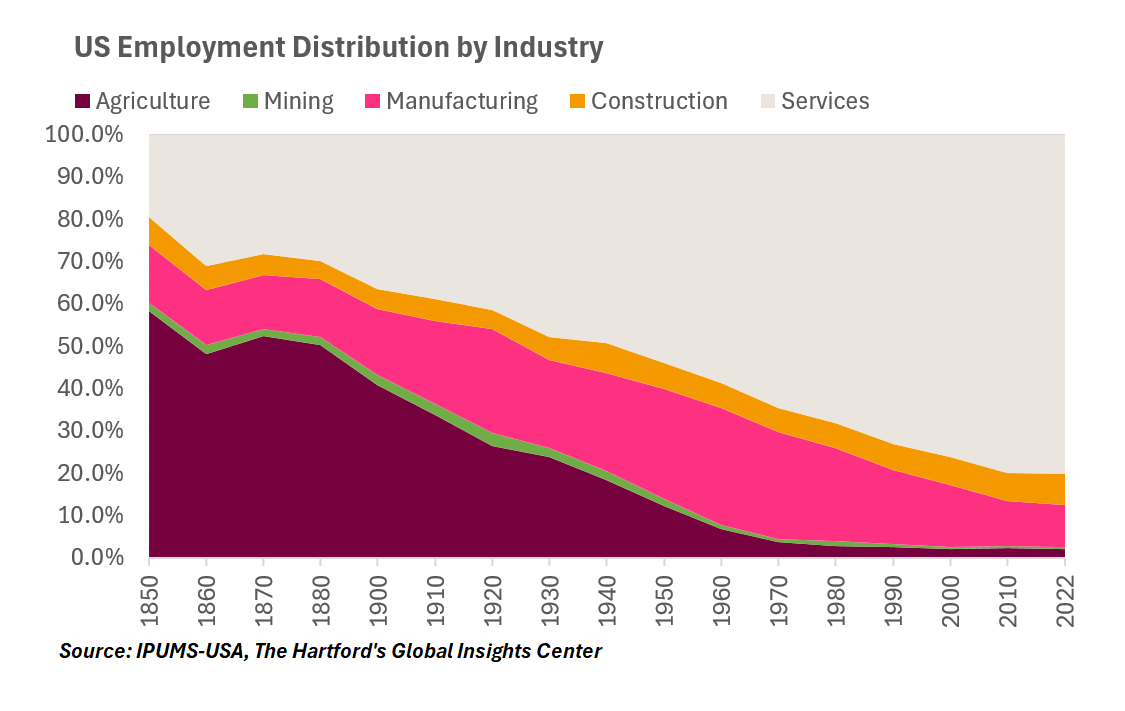
Potential Economic Growth
It's also important to consider the state of labor. As noted above, economic growth stems from productivity growth and labor force growth. Over the past 70 years, potential GDP growth, a measure of the economy’s ‘speed limit’, has fallen from the 3.0-4.0% range in the 1960s-1990s to around 2.0% in the past 20 years. The major cause of this deceleration in growth run rate is the slowdown in growth of the labor force.
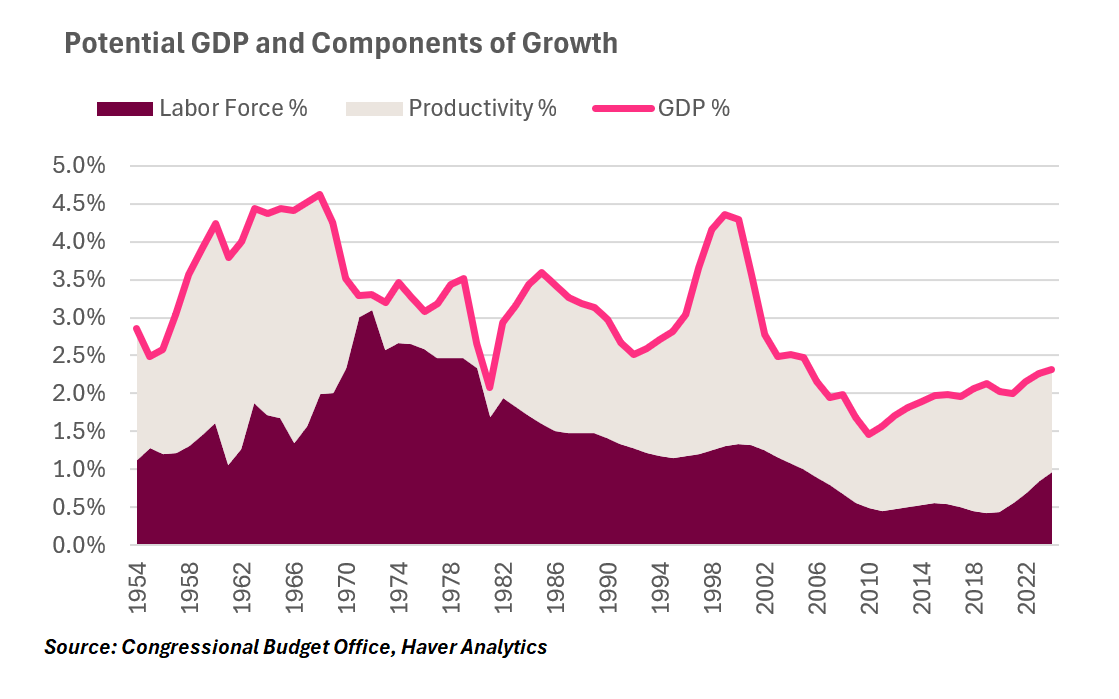
High birthrates, particularly for the baby boom generation, the increasing participation of women in the labor force and high immigration all contributed to labor force growth through the 1990s. In the 1970s, these factors converged to support potential growth of at least 3.0% per year despite limited productivity growth.
Since then, as birthrates have declined below replacement rates, women’s labor force participation growth has plateaued, and productivity has stepped in as the primary driver of economic growth. Population growth will continue to slow in the future, and the labor force will slow even faster, as the size of age cohorts nearing retirement match or exceed the size of cohorts entering prime working ages.
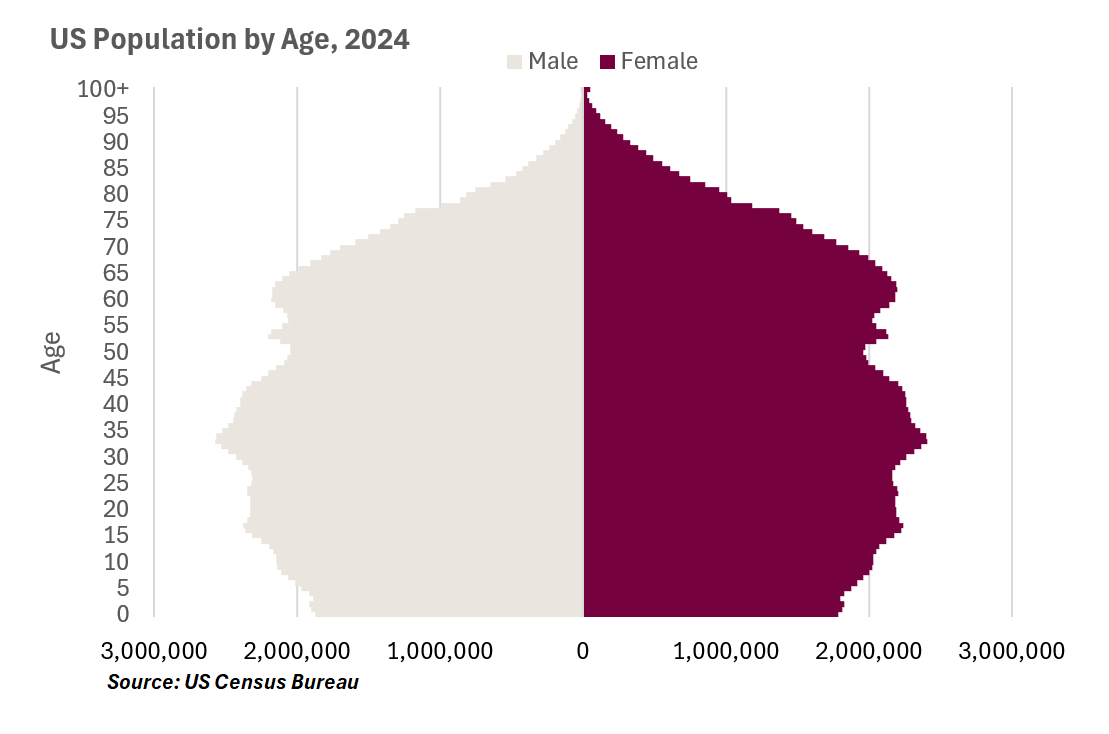
In order to sustain economic growth in the future, new sources of productivity are needed, and AI is poised to meet this demand. Because scarce resources are rarely discarded, we expect AI will be used to boost labor rather than replace it, given our structural labor shortages. However, the skills and job duties of workers will shift over time, as businesses and workers experiment with how best to integrate AI with existing workflows.
Use of AI
Businesses are just beginning to experiment with integrating AI with their workforce, but looking at their early experiences and expectations with AI, we can get insights on how AI may affect the workforce. A survey by McKinsey & Company found that AI may reduce staffing in service operations, supply chain/inventory management and HR; conversely, staffing may increase in IT, software engineering and product/service development. History tells us that it takes years or decades for the economy to fully integrate new technologies; initial efforts by companies may bear fruit or may reveal unexpected challenges. At the same time, the technology will continue to improve, changing the potential scope of activities.
The Geopolitics of AI
On a more macro basis, the question also comes down to which nations can harness and dominate the AI landscape. The U.S. has held the preeminent place in the post-World War II period because it has remained at the cutting edge of technology. Current AI breakthroughs are concentrated in the U.S., though China is rapidly developing its own AI capabilities. But dominance in AI is not just about creating the technology but about leveraging it for productive use.
AI “ownership” will be a dominating facet of geopolitics in the decades ahead. This includes a global competition over resources integral to AI, such as:
- Semiconductor manufacturing
- Data centers
- Energy generation and transmission
- AI workforce talent
Today, we are already seeing this ownership struggle play out as the U.S.:
- Places restrictions on the trade of advanced semiconductors and semiconductor manufacturing machinery to China.
- Attempts to reduce reliance on global supply chains and develop domestic production of cutting-edge semiconductors.
The demographic transition of aging populations, slow growth and limited labor force growth (or decline) is affecting nations throughout the world, though at different speeds. Thus, all nations have incentives to realize the benefits of AI to support their economies and generate prosperity in the face of labor shortages.
The rise of AI will have a dramatic impact on the U.S. economy. AI, like past technological cycles, can lead to sustained increases in productivity and can support economic growth in the face of demographic slowdowns. Labor will need to evolve to work alongside AI and vice versa. The critical question comes down to how nations will develop and use AI to benefit their economies.
To learn more insights on worldwide trends, visit The Hartford’s Global Insights Center.
The information provided in these materials is intended to be general and advisory in nature. It shall not be considered legal advice. The Hartford does not warrant that the implementation of any view or recommendation contained herein will: (i) result in the elimination of any unsafe conditions at your business locations or with respect to your business operations; or (ii) be an appropriate legal or business practice. The Hartford assumes no responsibility for the control or correction of hazards or legal compliance with respect to your business practices, and the views and recommendations contained herein shall not constitute our undertaking, on your behalf or for the benefit of others, to determine or warrant that your business premises, locations or operations are safe or healthful, or are in compliance with any law, rule or regulation. Readers seeking to resolve specific safety, legal or business issues or concerns related to the information provided in these materials should consult their safety consultant, attorney or business advisors. All information and representations contained herein are as of May 2025.
The Hartford Insurance Group, Inc., (NYSE: HIG) operates through its subsidiaries, including the underwriting company Hartford Fire insurance Company, under the brand name, The Hartford,® and is headquartered in Hartford, CT. For additional details, please read The Hartford’s legal notice at https://www.thehartford.com
The Hartford Insurance Group, Inc., (NYSE: HIG) operates through its subsidiaries, including the underwriting company Hartford Fire insurance Company, under the brand name, The Hartford,® and is headquartered in Hartford, CT. For additional details, please read The Hartford’s legal notice at https://www.thehartford.com


